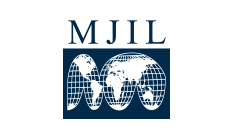Abstract
This Essay, in order to offer up something to that appetite, is divided into five parts. After this introduction, the author, A. John Radsan, describes a Hegelian impulse, the perpetual drive to find unity in disorder. That impulse, for better or worse, creates the train and the track for many of the academy's journeys. Radsan then defines what is meant by "intelligence activities" for purposes of this Essay, after which Radsan surveys the scholarship that existed before this symposium on the relationship between espionage and international law. As the number of pages written on this topic suggests, scholarship on espionage and international law has not been very extensive. This survey of the scholarship concludes by leaving us in an ambivalent position: espionage is neither legal nor illegal under international law. Espionage exists between the tectonic plates of legal systems. Following the survey of the literature, Radsan describes a set of dualities that informs the international practice of espionage. This final Part, inspired by mystical poetry, is the most substantial part of this Essay. Coming full circle, the conclusion, as presaged by the introduction, is that rather than force synthesis, we should tolerate the ambiguities and paradoxes inherent in the world's second oldest profession. Accepting that espionage is beyond the law, we should move on to other projects-with grace.
Recommended Citation
A. J. Radsan,
The Unresolved Equation of Espionage and International Law,
28
Mich. J. Int'l L.
595
(2007).
Available at:
https://repository.law.umich.edu/mjil/vol28/iss3/5
Included in
International Law Commons, Military, War, and Peace Commons, National Security Law Commons

